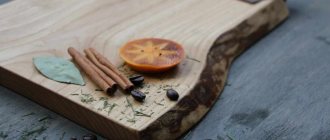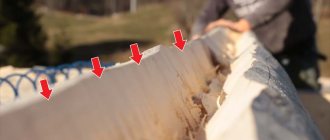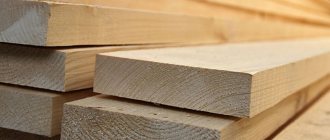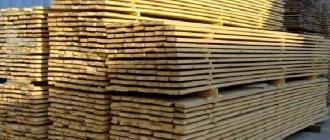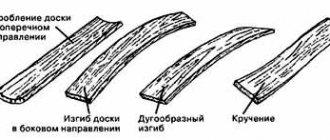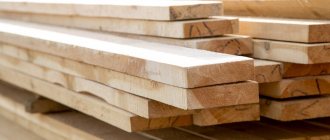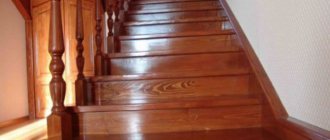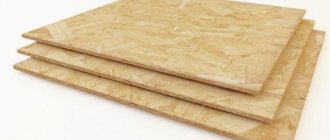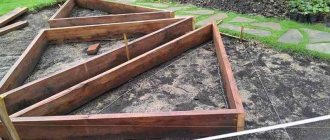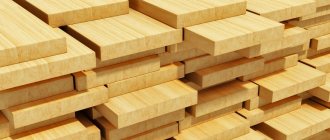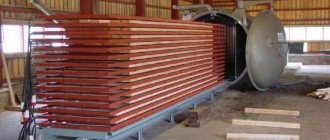03.01.2022
Cleaning and Cleaning
0
9 min
211
Hello, friends!
A cutting board is an essential kitchen element that comes in handy when preparing your favorite dishes for family and friends.
And depending on your menu, you may even have multiple cutting boards in different materials to get the job done.
Wood and plastic are the two most popular types of cutting boards and are also considered the safest.
No matter what material you have, make sure you take the time to clean it properly to keep any unwanted bacteria or viruses away.
Thanks to their porous structure, cutting boards can be the perfect place to fight off those pesky gut bugs like E. coli and salmonella that can get into your food while you're cooking it.
To make sure this kitchen tool is clean and free of germs and viruses, follow these steps to clean cutting boards.
Washing symbols on clothing care label
How to clean wooden cutting boards?
Set aside a few lemons for your next grocery run.
When combined with two pantry staples (salt and baking soda), citrus fruits have powerful cleansing powers that go beyond the surface.
Lemons make an excellent cleaning agent due to the antibacterial properties of their acidic juice, and the abrasive properties of salt are good for cleaning cutting boards.
Baking soda is a gentle abrasive—it also has brightening properties and is a natural deodorizer, helping to remove stubborn odors from onions, garlic, and other foods.
What you will need:
- 1/4 cup coarse salt;
- 1 lemon;
- Knife;
- 1/4 cup baking soda;
- Sponge or cloth;
- Bristle brush or toothbrush.
Step 1: Place a wooden cutting board in the sink and generously sprinkle the surface of the board with coarse salt.
Step 2: Cut the lemon in half and squeeze the juice from half over the salt. Rub the board with half a lemon.
Repeat this process on the other side of the board and let the cutting board sit for five minutes before rinsing off the lemon and salt.
Step 3: Wash both sides of the cutting board with warm water and a sponge or cloth.
Step 4: For tough stains, spray the cutting board with baking soda and scrub the board with a brush or toothbrush. Repeat on the other side.
Step 5: Rinse the board again with a sponge and warm water, then dry thoroughly with a clean towel.
Step 6: If you have an end-grain cutting board, be sure to oil it once it's completely dry so that your board can activate its "self-healing" properties and restore its fibers to their natural state.
Edged cutting boards should also be oiled regularly.
Wooden cutting boards, the cheapest available and prone to warping, do not require oiling for maintenance.
How to clean a wooden board with soap and water?
- Washing: Wash the board by hand immediately after use with dish soap and water;
- Drying: Pat the board dry with a paper towel or clean kitchen towel immediately after cleaning.
How to clean a wooden cutting board with vinegar?
- Pour: Open your vinegar and pour it onto the surface of your board;
- Wipe: After you have poured out the vinegar, wipe with a clean, damp cloth;
- Drying: Allow the board to dry after cleaning.
It is not recommended to use vinegar on cutting boards for raw meat, fish or poultry.
How to Clean a Wooden Board Using Bleach
- Mix the bleach solution: Prepare a mixture of 1 teaspoon of bleach per 1 liter of water;
- Apply the solution: Pour the mixture onto the board and rinse thoroughly with hot water.
Because moisture absorption can cause the wood to split and warp and allow bacteria to grow rapidly, never submerge a wooden cutting board under water or put it in the dishwasher.
How to properly care for wooden boards?
Seasoning your board can extend its life and prevent warping and cracking.
Depending on how often you use your wood cutting board, you can season it weekly, biweekly, or monthly.
Here's how to season a wooden cutting board:
- Wipe the surface of the dry board with food-grade mineral oil or beeswax;
- Let the oil sit for several hours;
- Wipe off any excess oil or beeswax with a dry cloth.
Never use vegetable oil or olive oil to season your cutting board because they can go rancid over time.
How to remove odor
Despite its ease of use, wood has one rather significant drawback - it actively absorbs foreign odors. And if at first this is not always noticeable, then over time it can cause discomfort when cooking. The most important rule is regular processing.
There are several remedies that can help cope with the problem:
- Vinegar. It is used to wipe the surface immediately after cutting food. This method works well with the aromas of fish, raw meat, garlic and onions. An alternative to vinegar is a slice of lemon.
- Coffee, tea leaves, mustard powder or charcoal. Anyone can rub the wood, and the unpleasant amber will disappear.
- Saline solution. You can resort to this method if you are not afraid of deformation of the wood. In this case, four tablespoons of salt must be dissolved in a liter of hot water.
How to clean plastic cutting boards?
Plastic cutting boards are often more affordable and easier to clean, making it easy to assemble different colors or designs that can be used for different purposes.
For example, by chopping vegetables on a green cutting board and raw chicken on a yellow cutting board, you can minimize cross-contamination and keep your cooking environment as safe as possible.
Check the condition of your plastic cutting board regularly for visible signs of wear.
The more scratches and cuts a knife makes, the easier it is for microorganisms to hide and grow, and the more difficult it will be to properly clean plastic cutting boards.
What you will need:
- 1 cup baking soda;
- 1 glass of salt;
- 1 glass of water;
- Small bowl;
- Spoon;
- Bristle brush or toothbrush.
Step 1: Combine baking soda, salt and water in a small bowl, stirring until a paste forms.
Step 2: Apply the paste to one side of the board with a spoon.
Step 3: Use a bristle brush or toothbrush to clean the surface of the plastic cutting board.
Rinse with warm water, turn over and repeat.
Step 4: Rinse the board with warm water and dry with a clean cloth.
Step 5: If you have a dishwasher, you can skip steps 1-4 altogether and throw the plastic cutting board in the dishwasher to clean.
Hot water will effectively sanitize your plastic cutting board(s) without any hassle or effort.
How to clean plastic cutting boards with vinegar?
- Making the paste: Mix equal amounts of baking soda and vinegar into a paste;
- Apply to board: Once the paste is mixed, spread it over the cutting board and let it sit;
- Rinse: After five minutes, wash the board with soap and water and rinse.
How to save plastic cutting boards?
When you start to see nicks on your plastic cutting board, use a steel wool pad to remove any loose plastic particles from the board's surface, then use a belt sander to smooth the surface.
Washing the board with table vinegar
Table vinegar 9% can easily remove dirt and stubborn stains on the surface of the board. If the contamination is slight, vinegar is diluted half and half with water. This product will not only perfectly clean the surface, but also disinfect it.
The vinegar solution or pure vinegar is poured into a spray bottle and sprayed onto the surface. After this, rub the board with the hard side of a kitchen sponge. Each time after using a sponge, you need to spray the board again.
When the surface is clean, wipe the board with a swab dipped in pure hydrogen peroxide. All that remains is to rinse with water and dry with a towel.
How to clean bamboo cutting boards?
Generally, bamboo cutting boards will not crack, warp, or stain as easily as wood boards due to their higher density.
They are also more resistant to cuts and knife marks than wooden alternatives, meaning they are more resistant to the growth of dangerous bacteria.
To clean a bamboo cutting board, follow these steps:
- Choose a cleaning product: You can use dish soap, white vinegar, or a bleach and water solution to clean the board;
- Add hot water: Mix your chosen cleaning product with hot water and thoroughly wipe the surface of the board;
- Drying: Pat the board dry with a paper towel or clean kitchen towel immediately after cleaning;
- Avoid getting wet: Do not soak your bamboo cutting board or put it in the dishwasher.
How to care for bamboo cutting boards?
The process of caring for a bamboo cutting board is very similar to caring for a wooden cutting board:
- Wipe the surface of the dry board with food-grade mineral oil or beeswax;
- Let the oil sit for several hours;
- Wipe off excess oil or beeswax with a dry cloth;
- Never use vegetable oil or olive oil to season your cutting board because they can go rancid over time.
But in addition to the steps above, you can also cut a lemon in half and rub it, cut side down, across the surface of the board to freshen it up between oil or beeswax treatments.
The natural acidity of lemon will help remove residue on your cutting board.
How to disinfect a wooden device
In addition to cleaning and eliminating unpleasant odors, it is necessary to regularly disinfect utensils. This will guarantee the long service life of the item.
The simplest thing is to wipe it with vinegar or peroxide. To protect the surface from the penetration of bacteria, you can resort to the following means:
- Mineral oil. It is applied to the surface a couple of times at intervals of several hours. This condition must be met so that the first layer has time to absorb sufficiently.
- Mineral oil and beeswax. The ratio of the two components: 3 parts to 1.
Don't be afraid to go overboard with the coating. The tree will absorb exactly as much oil as necessary. It will also create a moisture-proof layer on the board, which will reduce the absorption of stains.
How to clean rubber cutting boards?
One of the benefits of a rubber cutting board is its non-porous and non-absorbent surface, which resists warping and does not retain as much bacteria as porous alternatives.
Here's how to clean a rubber cutting board:
- Scrub: Using dish soap and hot water, scrub cutting board thoroughly;
- Avoid dishwashers: Never put a rubber cutting board in the dishwasher because high temperatures can damage the materials.
How to care for rubber cutting boards?
Unlike wood and bamboo options, rubber cutting boards require little maintenance.
Just replace the board if it gets badly cut by the knives.
This will prevent the growth of bacteria in cut defects caused by long-term use.
Sandpaper
Sometimes dirt eats into the fibers so much that it is not possible to wash them using conventional means. Then sandpaper will come to the rescue.
To do this, you need to take fine-grained sandpaper and carefully sand the entire surface.
As you can see, any of these methods will help tidy up your kitchen appliances, and most importantly, without the use of harmful chemicals.
How to clean composite cutting boards?
To clean your composite cutting board, simply rinse it and place it in the dishwasher.
Composite cutting boards are made from durable polymer material, making them strong and durable.
Typically, composite boards can withstand temperatures up to 250 degrees Fahrenheit without damage.
As a result, they are ideal for cutting meat and can even be used as a pizza pan.
How to properly care for composite cutting boards?
Although composite cutting boards are more resistant to scratches and cracks than wood and plastic boards, they need to be replaced when they wear out.
Be aware of damage to the surface of the board and replace it if it produces an odor when wet.
Features of plastic and wood
For several decades now, plastic and wood have been at the top of popularity in the manufacture of cutting boards. But, as they say, every coin has two sides. So, the listed materials have both positive and negative sides. Let's dwell a little on these points.
Tree
This material has its advantages:
- ease of use;
- relatively low cost;
- environmental friendliness;
- strength.
Flaws:
- the material absorbs fruit and vegetable juice;
- rapid contamination and wear.
Plastic
The following positive aspects of this material can be highlighted:
- color variety;
- does not absorb odors;
- strength;
- ease.
Minuses:
- no antibacterial coating;
- slippery surface;
- questionable environmental friendliness.
How to clean flexible cutting boards?
When you're done using your flexible cutting board, simply rinse it with warm water and place it in the dishwasher.
Flexible cutting boards have a flexible design that allows them to easily be formed into a funnel for pouring chopped and chopped ingredients into a bowl or pan.
Flexboards are often made of plastic, which helps resist bacterial growth.
How to Maintain Flexible Cutting Boards?
Most flexible cutting boards are relatively thin, and not all options are suitable for use with exceptionally sharp blades.
If any of your cuts go through, you will need to replace the board.
How to evaluate the quality of mineral oil
When choosing mineral oil, there are certain requirements for the product
You should pay attention to the following quality parameters:
- Safety. The product must not release toxins when used. This is especially true for wooden products that are located in rooms with an unstable microclimate (high humidity, temperature fluctuations).
- Depth of penetration into the wood structure. Oil must be absorbed, unlike varnishes, glazes and a number of impregnations.
- Water-repellent qualities. A low-quality product will lead to rotting and rapid deterioration of products.
- The ratio of mineral and natural oils. It is desirable that the percentage of natural components be higher.
- Vapor permeability. High-quality oil should not create a film on the wood, since the main advantage of wood disappears - the ability to “breathe”.
- Transparency. As a result of application, the high-quality composition does not change the appearance of the wood (structure, color, pattern). But if you wish, you can add safe colors that will paint the surface of the object in the desired color.
- No smell. If the oil does not smell of anything, then it contains a minimal amount of chemicals.
Additional methods for cleaning cutting boards
While salt and lemons have strong natural cleaning properties, there are other common household products that can be used to effectively clean cutting boards.
For an extra clean when your board needs a little extra attention, try treating it with bleach, hydrogen peroxide, or vinegar.
Bleach: Mix 2 teaspoons of bleach per 2-3 liters of water. Soak the cutting board thoroughly for 2 minutes, then rinse with warm water and let it dry.
Hydrogen Peroxide: Get rid of unwanted bacteria from any cutting board by wiping it down on each side with a paper towel soaked in hydrogen peroxide.
Let the board sit for a few minutes, then rinse with warm water and dry with a clean cloth.
White Vinegar: Apply distilled white vinegar to cutting board and wipe off.
To remove odor from a cutting board, sprinkle a little baking soda on the board and then spray it with vinegar.
Let the vinegar and baking soda work their magic for 5-10 minutes (you'll see them start to bubble), then rinse the board with a rag and cold water.
FAQs
Cleaning cutting boards with bleach
Bleach can help sanitize your cutting board or remove surface stains after use.
To learn how to clean a cutting board with bleach, follow these steps:
- Mix a bleach solution: Create a bleach cleaning solution using 1 tablespoon of bleach per quart of water;
- Pouring: Once the solution is ready, pour it onto the board and let it sit;
- Rinse and Dry: Once the board has had time to sit, rinse it with water and let it air dry.
Can plastic cutting boards be put in the dishwasher?
A plastic cutting board cannot be washed in the dishwasher.
Prolonged exposure to heat and water inside the machine can cause the plastic board to change shape, making it uneven and less efficient.
Each type of cutting board has unique cleaning and maintenance needs.
Therefore, it is important to know how to handle your cutting board to avoid dangerous levels of bacteria and damage.
Use this guide as a guide when cleaning cutting boards, but if you are unsure how to handle the board, consult the board manufacturer.
How do you clean cutting boards at home?
Reveal your secrets in the comments section below, we'll thank you.
See you soon! Come in!
Average score: 0
Did you like the article? Please share this with others!
Why is processing needed?
During operation, the cutting board is subjected to enormous loads. It is scratched by knives, water, juice from cut foods, blood, and also cleaning agents used to wash dirt off the board get into the pores of the wood. Therefore, the service life of untreated wood is no more than a year. At the same time, boards made of beech, birch, pine, and oak are not cheap.
During processing, the oil fills the natural pores of the wood. This solves the following problems:
- The development of unwanted microorganisms in the tree: mold fungi, putrefactive bacteria, etc. Microorganisms that settle on the board can not only spoil food, but also get into the food, causing health problems. Therefore, treatment is necessary to make the board safe to use.
- Excessive swelling and deformation of wood from water. This problem is especially relevant for plywood cutting equipment. Penetrating between the layers of veneer, moisture causes delamination. Impregnation protects the pores from water entering, preventing deformation.
- Chips and cracks. When wood dries out, it becomes brittle. Protective impregnation prevents moisture from completely leaving the pores.
That's why kitchen utensil manufacturers almost unanimously recommend treating cutting utensils.
Primary processing must be carried out immediately after purchase. Even washing the board once will saturate it with water, and the protective composition will “lock” the water into the pores. Such a board will be much heavier, and it is excellent for the development of putrefactive bacteria.
